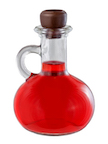
IS IT REAL? IS IT FAKE?
The Los Angeles Whiskey Society specializes in the authentication of vintage, collectible, and historic whiskeys. We’ve inspected countless bottles, from back-of-grandma’s-cabinet discoveries to elite multimillion-dollar private collections. We’ve handled the rarest of rarities and the most convincing of fakes. We’ve advised all the major U.S. auction houses, helping educate and train many of their specialists.
HOW WE VERIFY WHISKEY
What we do combines science, art, and extensive experience.
Authenticating whiskey comes down to two major questions: 1. "Does this product appear correct, based on what the label says it is and when the whiskey supposedly dates from?" 2. "Can we verify the bottle has not been opened, refilled, or tampered with?"
Many counterfeits use genuine bottles that have been refilled with cheap booze (or even colored water) and resealed. Alternatively, some bottles that seem suspicious or tampered with are perfectly fine. Knowing the difference is key.
We don’t discuss most of our authentication techniques publicly, because counterfeiters are always looking to improve — and we’re not here to help them.
WHAT IF I HAVE OLD WHISKEY TO AUTHENTICATE?
We don’t charge for this service, except in extreme cases. We do this in our spare time, driven by deep interest and experience. But that means we can’t evaluate every submission. We choose based on our preferences and time.
- American whiskey (bourbon, rye, or other) must be bottled prior to 1920. Single malt scotch, bottled prior to 1970. For blended scotch, bottled prior to 1930.
- It must appear sealed to a reasonable person.
- The whiskey must be in your possession.
If you want an official endorsement (such as a statement to accompany a bottle), we will likely need to examine the whiskey in person.
If you meet the above requirements, use the form below to contact us.
For collections, a general overview is fine.

